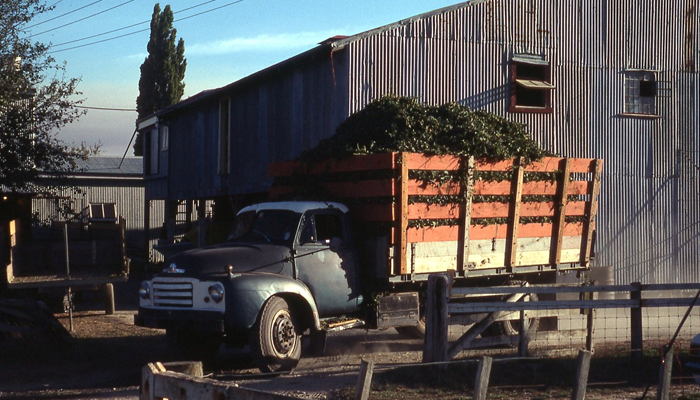In this blog post, I have the privilege of sharing insight about composting from Brent McGlashen of New Zealand's Mac Hops Farm, Brent is a proponent of using PLA or bioplastic twine in lieu of traditional plastic string or coir in hops production. Several years of collaboration with a PLA manufacturer has produced string specifically for the hops industry. According to Brent, this string is, "exceptional in our compost system. I have turned this year’s pile twice and after 30 days, about 80% of it had vanished." Brent, knowing well that many hops growers in the Pacific Northwest use coconut coir for twining, noted that if growers in "[that] part of the world" change to bioplastic string, "then they really will appreciate how much of an asset this exceptional compost is.” Here are Brent's words of wisdom about the benefits of composting for a hops operation and why choosing the right twine is important for the process.
____________________________
Composting has been an important part of our farming system ever since machine harvesting first started. We purchased a guillotine chopper component to our Bruff Hop Picking machine back when it was installed in 1963. The only problem was, we didn’t have a powerful enough tractor to turn the compost, so it took a long time for it to completely compost. Nowadays, we have our big 20-ton digger that turns our full year’s crop in a couple of hours!
At the time of the first hop machines, often it was the last thing to think about in the process was what to do with the end product termed ‘The Waste’. A majority of growers would just spread the material green back out onto their fields. This practice is still done today as growers perceive that the benefit to having compost doesn’t add up to the land use for your composting pile or the cost of doing it. Over the many years we have certainly proved to ourselves and others who have seen what we can achieve by utilising this so called ‘Waste product’ and turning it into a big benefit for our farming system. Some of our hop fields have been cropping hops continuously now for 70+ years, and still producing towards the top end in the yield statistics. You don’t get these results by mistreatment of your plants and soils.
The hop bine, as everyone knows, is a very bulky plant that has a relatively low yield in weight of cones vs greenery. All this material has had to use an extensive amount of soil nutrients and applied nutrients to sustain its rapid growth rates to carry the crop through till harvest. Now just think about it, these nutrients don’t just disappear into thin air as soon as the hops are stripped off the bines when going into the machine. So why not capture as much of that goodness as possible to use in the future as a merry-go-round of the nutrient cycle.
The biggest challenge we have faced in our composting system has been the string. After years and years of manually pulling the sting out by hand after each tractor bucketload, things had to change as we got more compost. So, we acquired a screener. This works very well to separate the earthy compost material from the string, but the compost needs to be relatively dry. Here in New Zealand, we get a lot of rain so some years we can only process the compost for several weeks. So, we needed to find a hop compostable string. We (Mac Hops) have been trialing different string products from all around the world for many, many years now. Little did we know, the best product was about to turn up on our doorstep from here in New Zealand.
We have been working with Joe Wiid from Extrutec Ltd. for the last three years now. We have never had the actual producer of the string spend time on our farm with our stringing crews learning what they like and don’t like about the string. Then, to go away and give us several prototypes that we can trial and evaluate, and even follow this through to the compost pile to test composability. We now string our whole farm in the product that Joe has made us.
In New Zealand we have three string products on offer:
- Plastic Type Twine: Very strong and holds up to many of our New Zealand weather challenges but doesn’t breakdown in composting.
- Coir: Expensive to buy in small quantities for the smaller farm sizes in New Zealand, doesn’t suit our thinner grade wire when we use vine pullers for machine harvest, requires a lot of labour to erect, takes a very, very long time to breakdown to the point the compost is getting too old to be effective.
- Extrutec Ltd. Hop Compostable String: Breaks down in the heat from the compost pile (within 30-90 days!), the easiest string to apply for our hand tying crew.
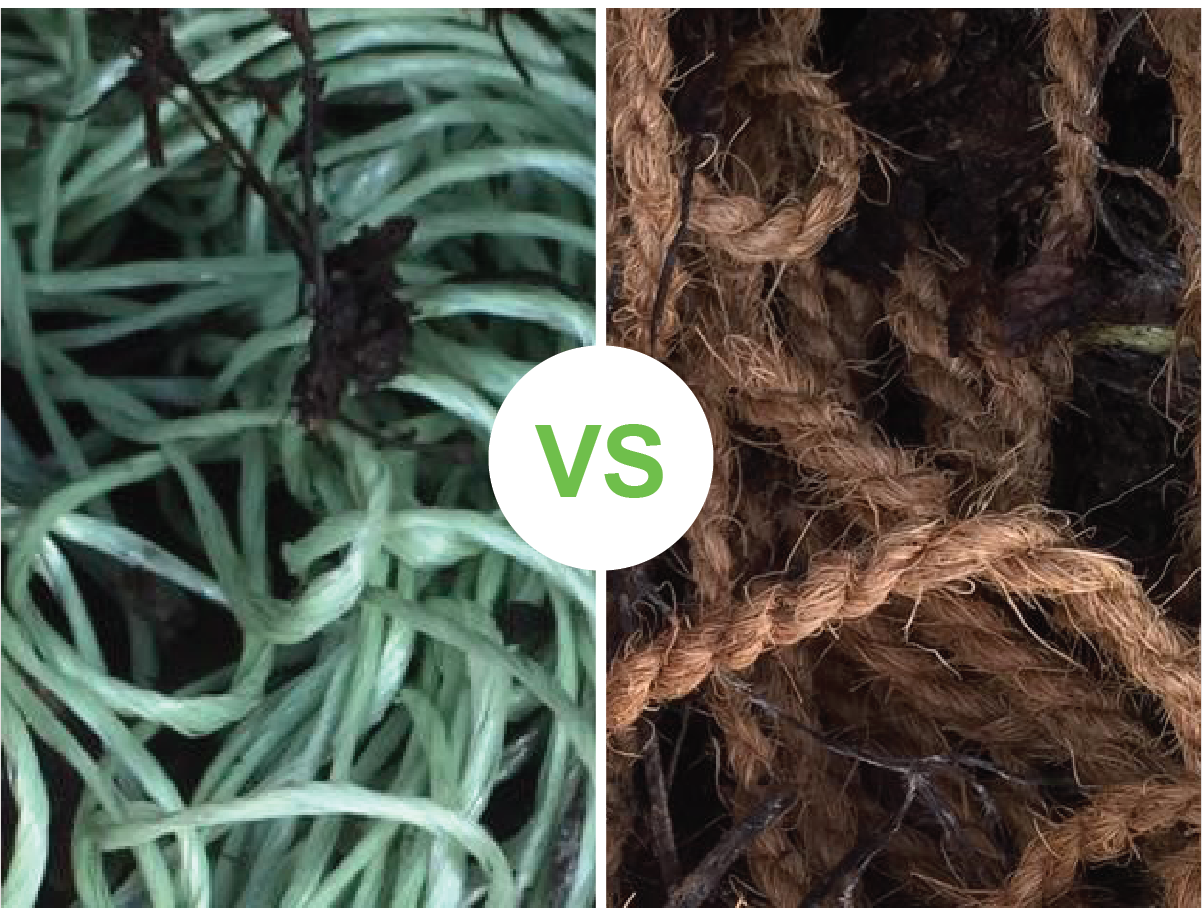 |
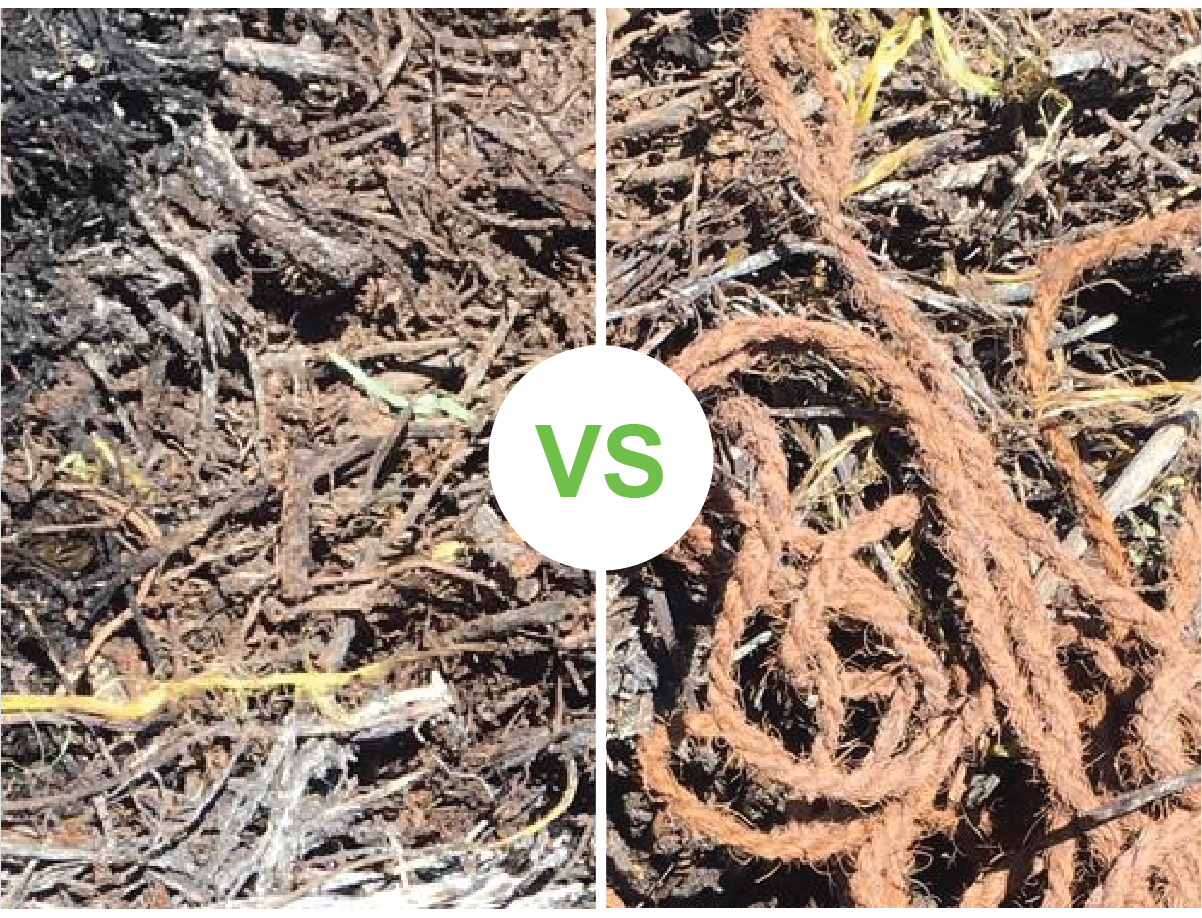 |
|
|
Hop Compostable vs Coir |
Hop Compostable vs Coir |
Cost for just the raw product in a ratio:
- Plastic 1, Hop Compostable 2.8, Coir 3.3
Cost for application
- Coir leaps ahead in labour expenses
Cost in composting system
- Hop compostable wins hands down
3 Tips for Anyone Wanting to Start or Better Their Hop Composting System
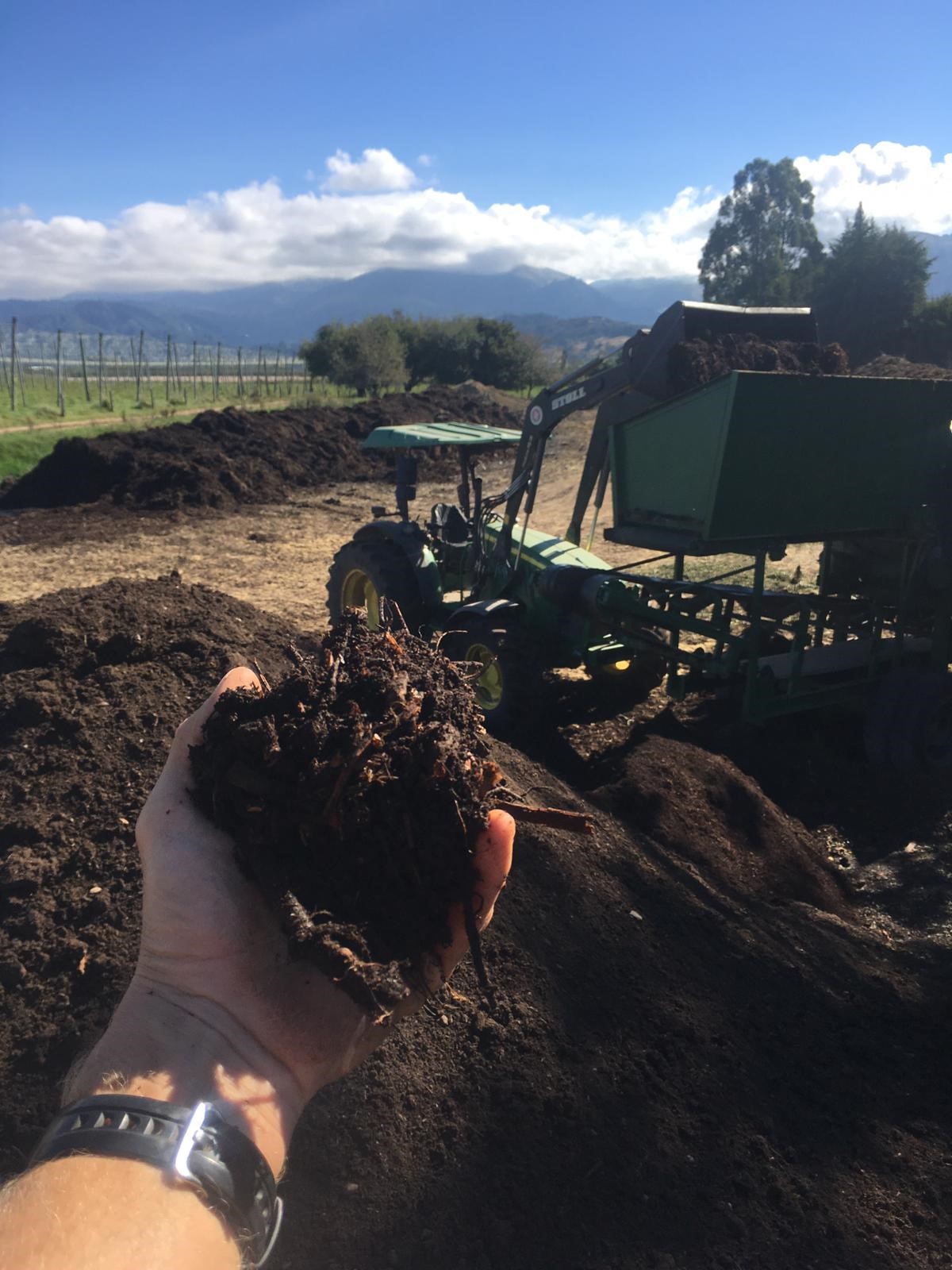
Tip 1
Use a guillotine type chopper as opposed to a rotary or shredder chopper. The guillotine style chopper cuts the bines into ‘straw’ lengths which shuts all the goodness in that part of the bine down into that length. Over in the compost pile, these ‘straw’ lengths allow for micro air pockets that maintain oxygen in the pile but still contain the heat and composting spores.
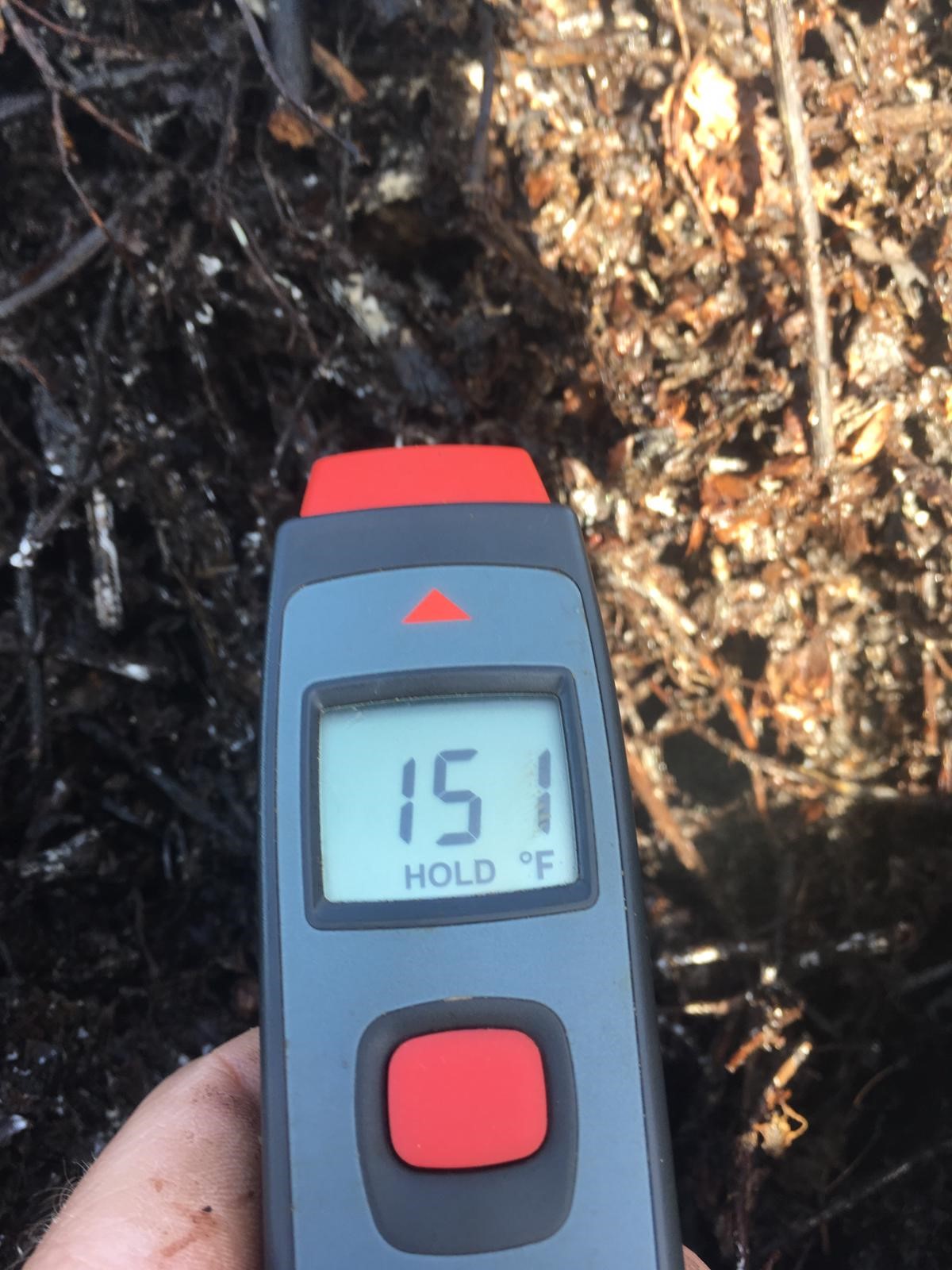
Tip 2
Store your hop compost in a high windrow type pile. This contains the heat as best as possible especially after harvest when you head into the winter months. It is vital that you keep the bulk of the pile as close to a composting temperature of 60-70⁰ C (140-158⁰ F) for as long as possible for rapid break down.
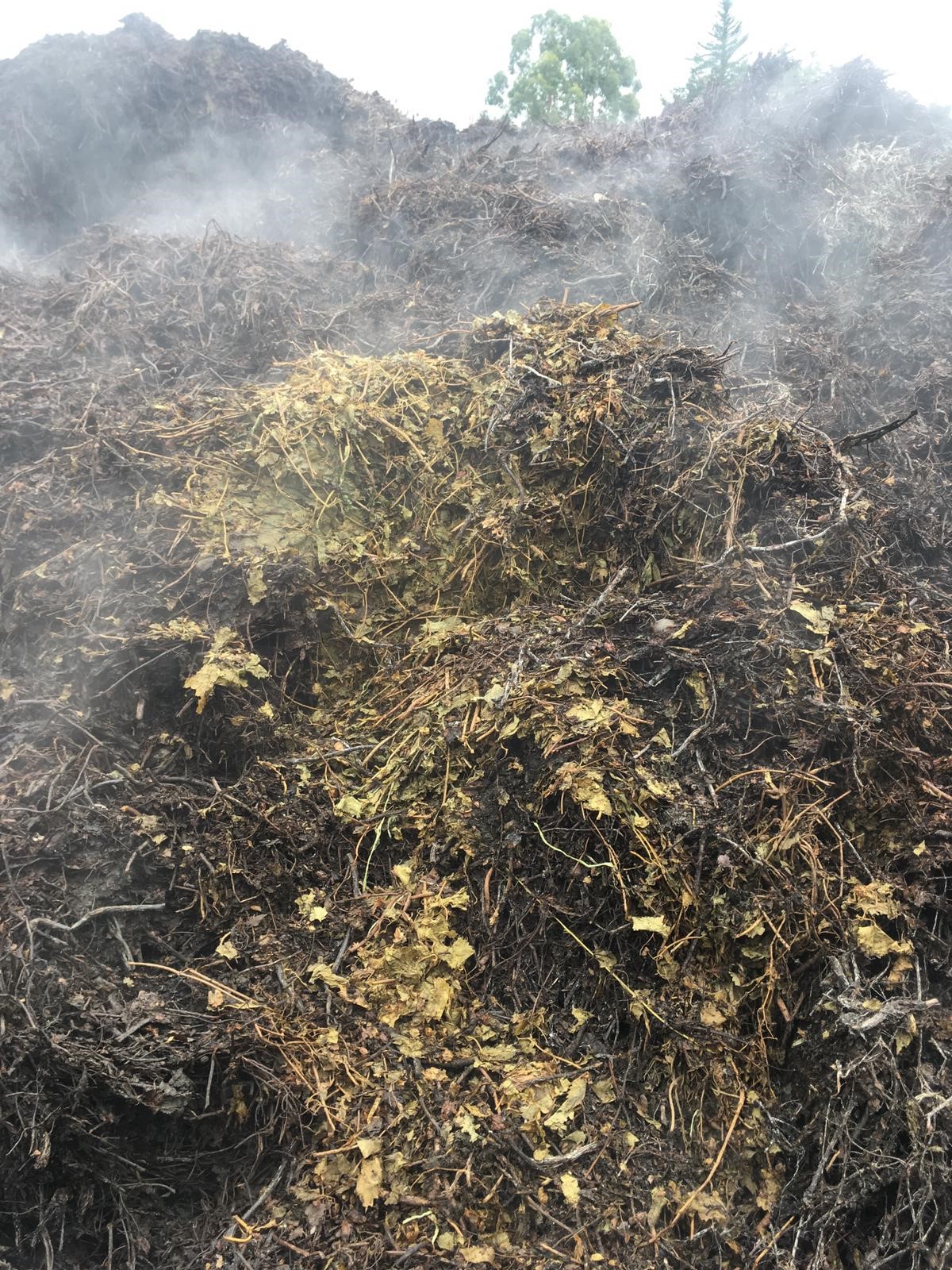
Tip 3
Turn your pile at least once within the first month of harvest and before the cold weather starts to set in. This helps aerate those locked-off oxygen areas and mixes the composting spores that have started. It will depend on the equipment you have and your farm size, but regular turning after that will help speed up your composting but you need to maintain that heat. Full breakdown (to become a soil type product) can happen within 12-18 months.
Summary:
Compost is a highly valuable resource, not a waste stream.
Photo credit: Brent McGlashen, Mac Hops

